Global Design: How a luxury hotel uplifts a Beijing hutong where locals still live
Sign up now: Get ST's newsletters delivered to your inbox
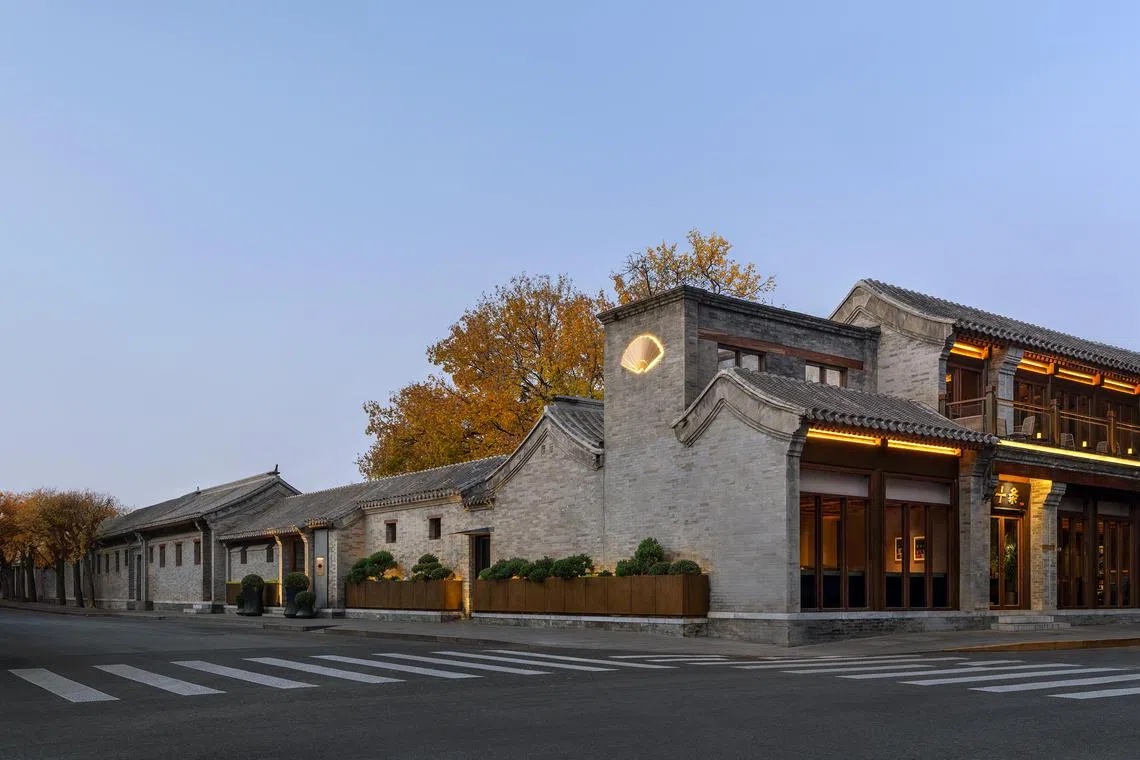
Mandarin Oriental Qianmen comprises 42 siheyuan courtyard houses spread out within a traditional hutong residential neighbourhood.
PHOTO: MANDARIN ORIENTAL QIANMEN
Karen Tee
Follow topic:
BEIJING – Waking up to the rustle of willow branches in the wind and the cheerful chirps of sparrows in my courtyard feels like being in a classical Chinese painting.
I take a moment to savour this tranquillity – made all the more extraordinary by the fact that I am situated in the heart of Beijing’s vibrant inner ring, just a 10-minute stroll from the bustle of Tiananmen Square.
This peaceful atmosphere is entirely by design at Mandarin Oriental Qianmen ( str.sg/mLZT
In a unique departure from a conventional single-building layout, the hotel comprises 42 siheyuan courtyard houses spread out within a traditional hutong residential neighbourhood.
These are a beloved urban and architectural feature that harks back to the Ming Dynasty.
Located in the Qianmen area of Beijing, the Chinese capital’s Caochang neighbourhood dates back to more than 600 years ago. Its maze-like grid of court buildings – separated by narrow alleyways called hutong – were once the residences of imperial inspectors, Peking opera performers and business owners, or institutions for imperial scholars.
For instance, the building that now houses the hotel’s lobby was once a community hall.
While many continue to value the hutong’s historical and architectural heritage, few locals actively seek out a home in these structures, preferring the conveniences of modern buildings.
To breathe new life into other traditional enclaves around Beijing, like Nanluogu Xiang and Qingfeng, their buildings were repurposed into eateries, cafes or shops selling snacks and souvenirs to tourists. While this brings new energy, it has also led to overcrowding on weekends – yet, the hutong can feel deserted on weekdays.
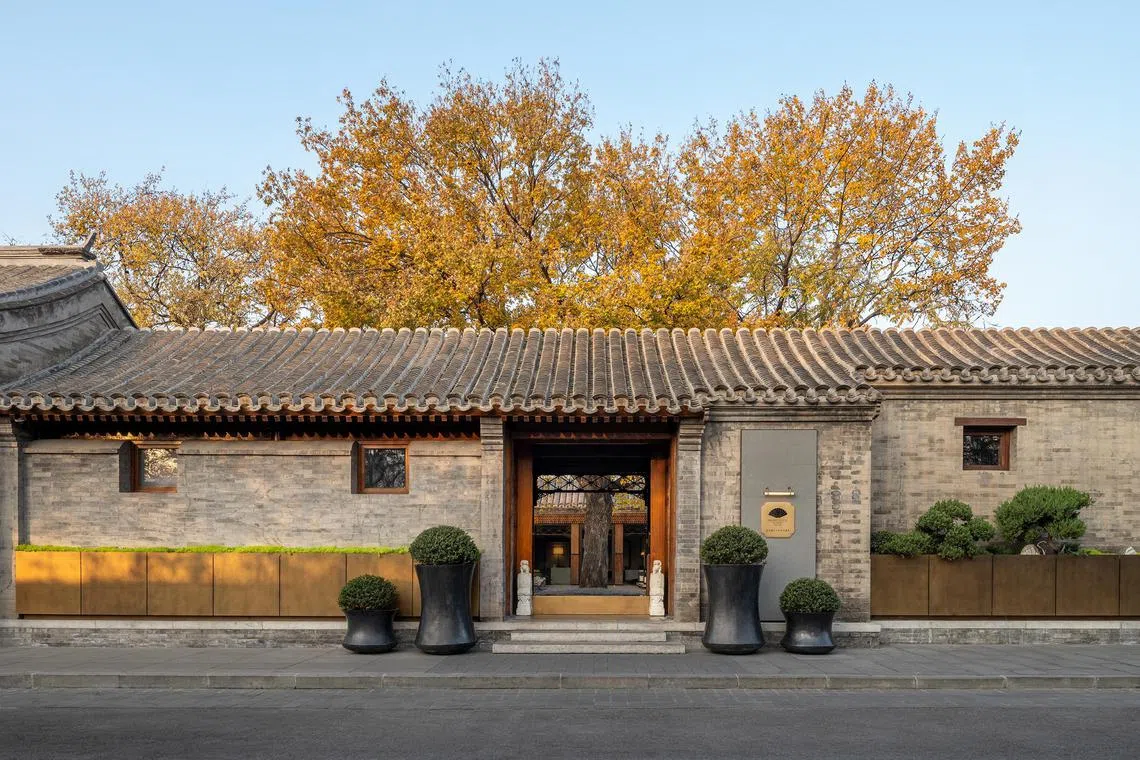
Mandarin Oriental Qianmen is the hotel group’s 10th and latest opening in China.
PHOTO: MANDARIN ORIENTAL QIANMEN
For the Caochang hutong, a different approach was adopted. To preserve the charm of residential life in a hutong, Mandarin Oriental and the Chinese government embarked on an eight-year joint venture partnership to convert selected vacant courtyard houses into hotel suites while preserving the essence of residential life.
With hotel “rooms” interspersed among existing homes, where residents still live and small businesses continue to operate, the aim was to elevate the living environment for the locals while allowing guests to experience first-hand what it is like to stay in a traditional Chinese neighbourhood.
“It was once crowded with merchants and guild halls, and was one of the liveliest neighbourhoods in old Beijing,” says Mr Joe Cheng, founder of Hong Kong-based design firm CCD, which led the hotel’s transformation.
However, like many areas in the old city district, Caochang has faced common problems, such as dirty streets and alleys, rainwater and sewage seeping into the alleys, and a lack of everyday facilities.
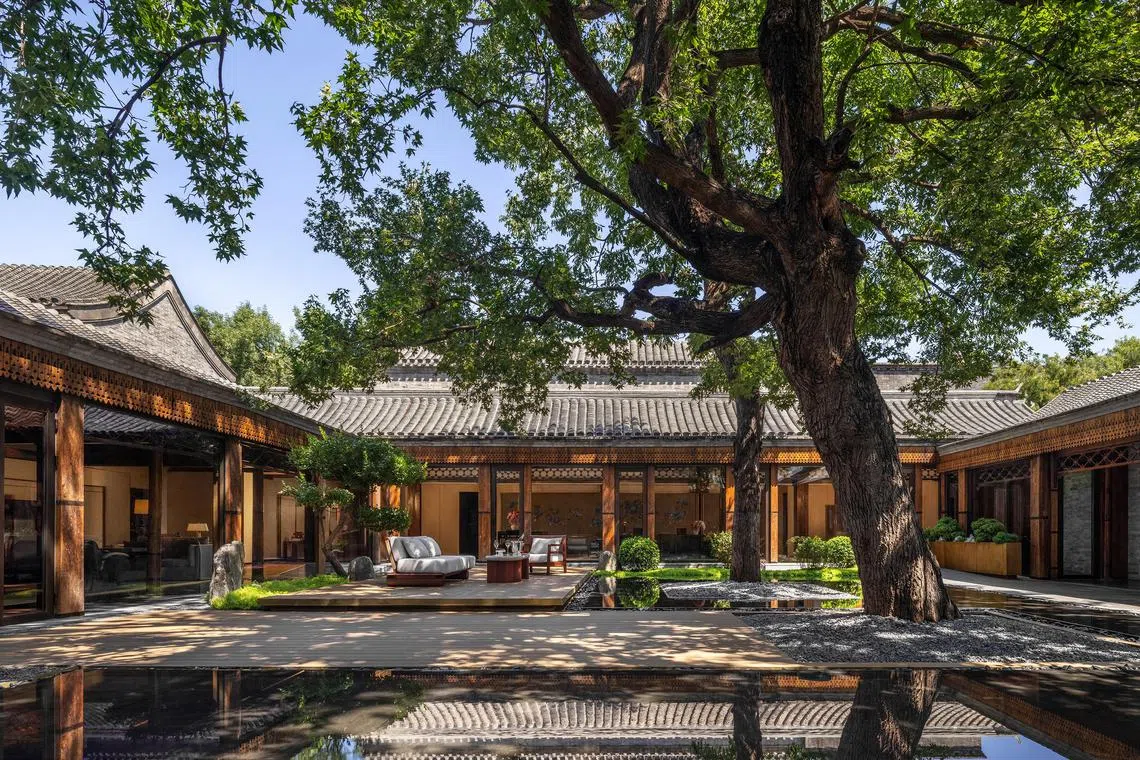
The hotel lobby's building was once a community hall. The courtyard features two carefully preserved 100-year-old trees.
PHOTO: MANDARIN ORIENTAL QIANMEN
“The biggest challenge was to strike a balance in maximising the protection to the original style of the old buildings, while making improvements with municipal facilities that would uplift the neighbourhood and improve people’s living environment,” adds Mr Cheng.
As such, the public infrastructure underwent significant upgrades. Exposed wires were buried underground, public toilets were modernised and the stone alleys were repaved.
For each of the 42 courtyard houses, which range from 103 to 525 sq m, restorative work strictly adhered to the principle of “restoring the old to its original state”, preserving up to 90 per cent of the original structures.
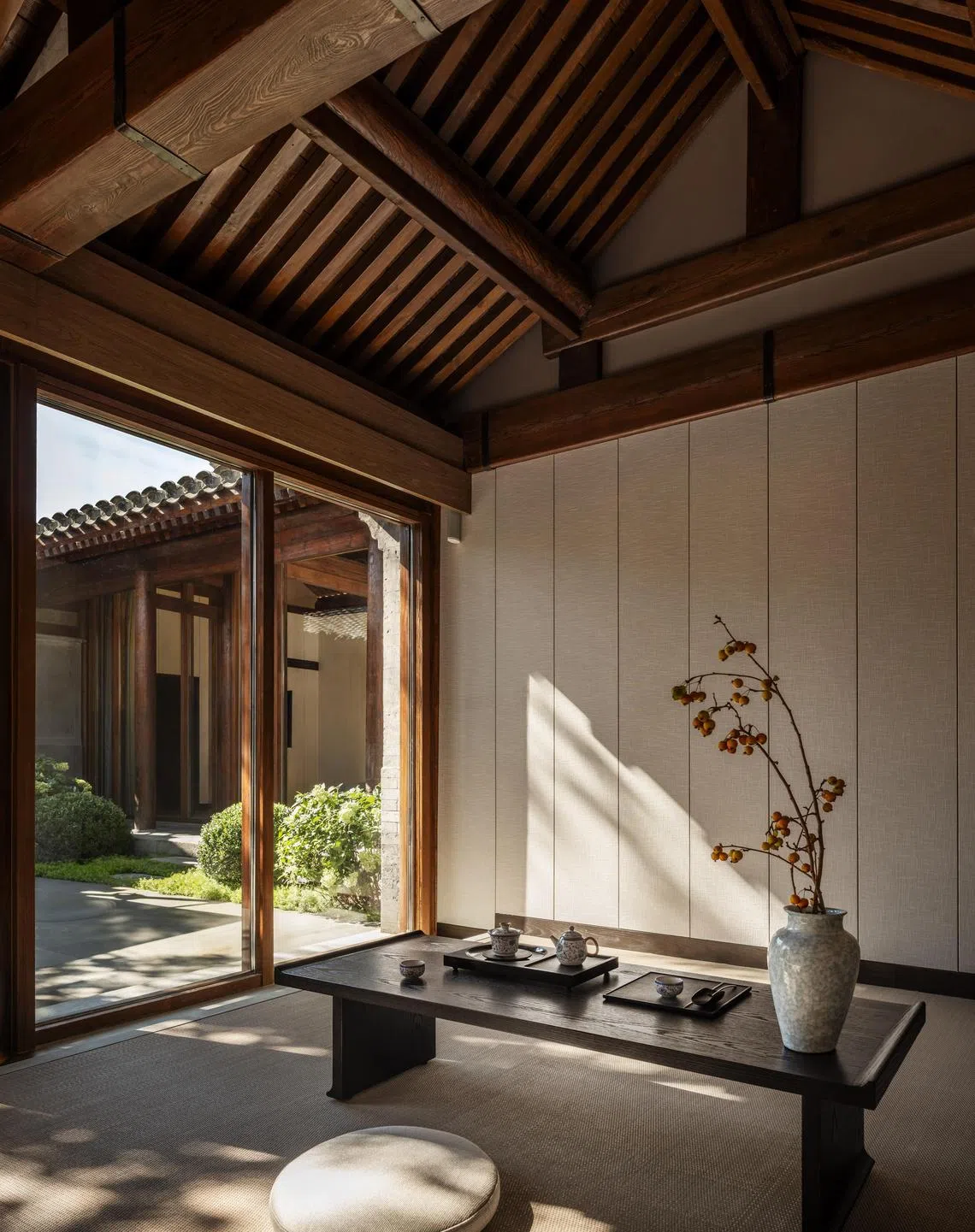
Some courtyard houses have tearooms, ideal for peaceful reflection.
PHOTO: MANDARIN ORIENTAL QIANMEN
Every brick and tile was restored or reused, while doors, windows, rafters and roof sheathing boards were repaired or replaced using traditional methods.
Even the height of the buildings was based on the original registered schematics, and the palette of grey bricks and tiles, blue-white stones and red bricks was chosen to stay true to the original aesthetics.
Particularly impressive are the double-sloped roofs, which are made of a wooden framework of beams, rafters and brackets without nails to hold them in place.
The design team reinforced the structure, but left the beams exposed to showcase the intricate and aesthetically pleasing joinery work that is characteristic of traditional Chinese carpentry.
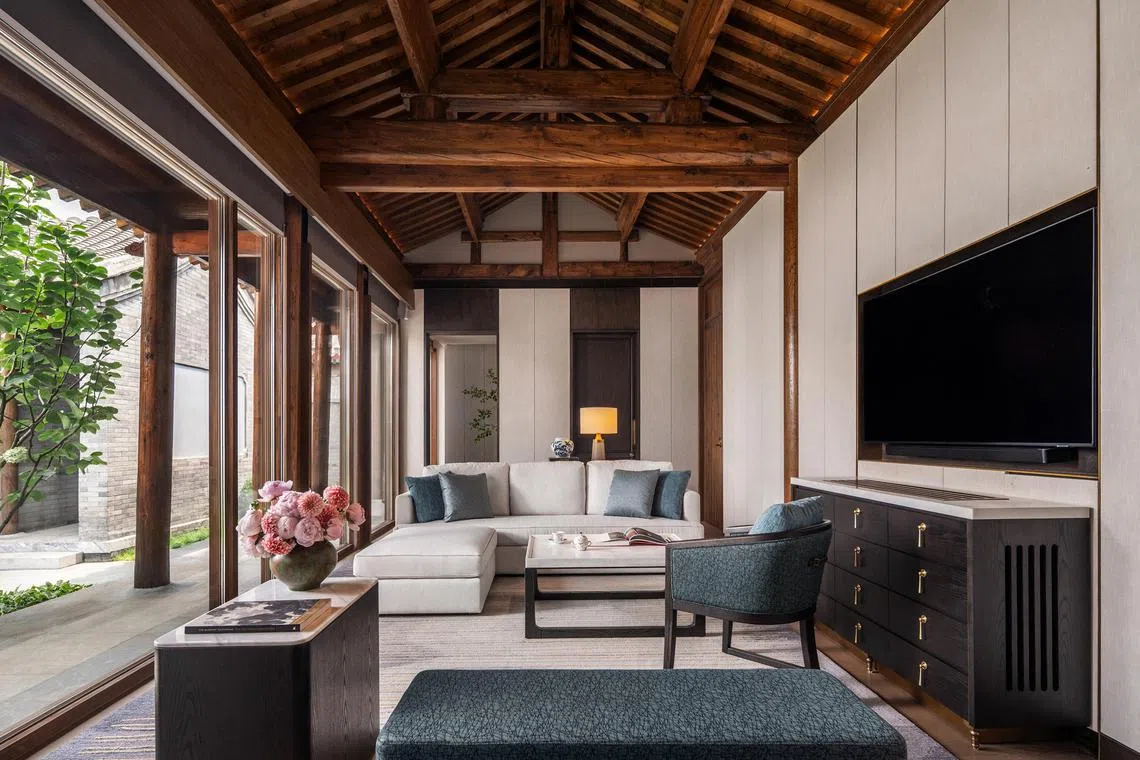
The renovated courtyard houses’ exposed roof woodwork can be seen in spaces such as Qianmen Courtyard Peking Mansion’s living room.
PHOTO: MANDARIN ORIENTAL QIANMEN
Nevertheless, there have been several adaptations to transform the courtyard buildings into hotel suites.
Typically, each house would be shared by multiple families and the courtyards sectioned among each household. But, in a nod to privacy and the brand’s luxury ethos, each “room” comprises an entire house. The smallest one-bedroom Deluxe Courtyard room is a generous 110 sq m, with an expansive living room and study.
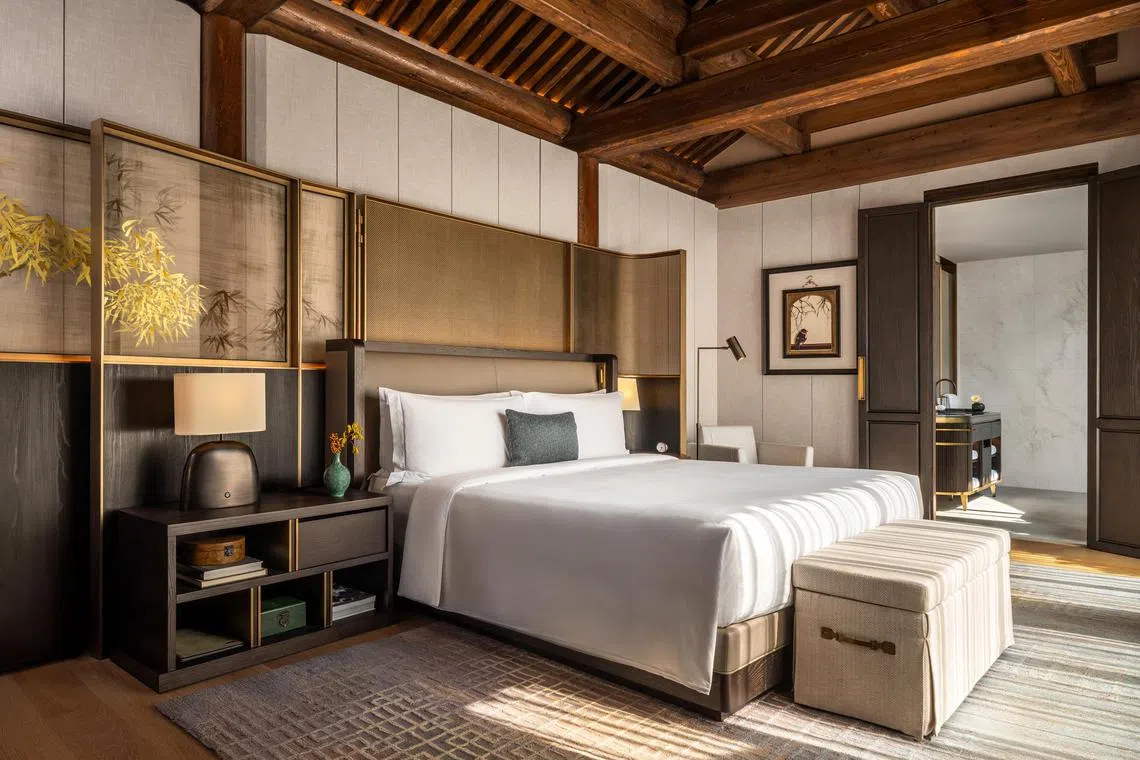
The Qianmen Grand Courtyard bedroom is decked out with embroidered screens and coffee-table books.
PHOTO: MANDARIN ORIENTAL QIANMEN
With every unit slightly different in its original design, the hotel offers 11 room categories. These include two- and three-bedroom courtyard houses suitable for families, as well as the grand Peking Mansion, the equivalent of a presidential suite.
This mansion – once the home of a descendant of the family that ran traditional Chinese medicine brand Tong Ren Tang – features a main courtyard house with a tearoom, living room and dining space within its spacious quarters.
One of the biggest changes for the 42 houses has been the addition of a bathroom to each courtyard house, as private bathrooms were not always found in traditional siheyuan.
This not only serves a modern necessity, but it also connects the original buildings’ standalone rooms to one another.
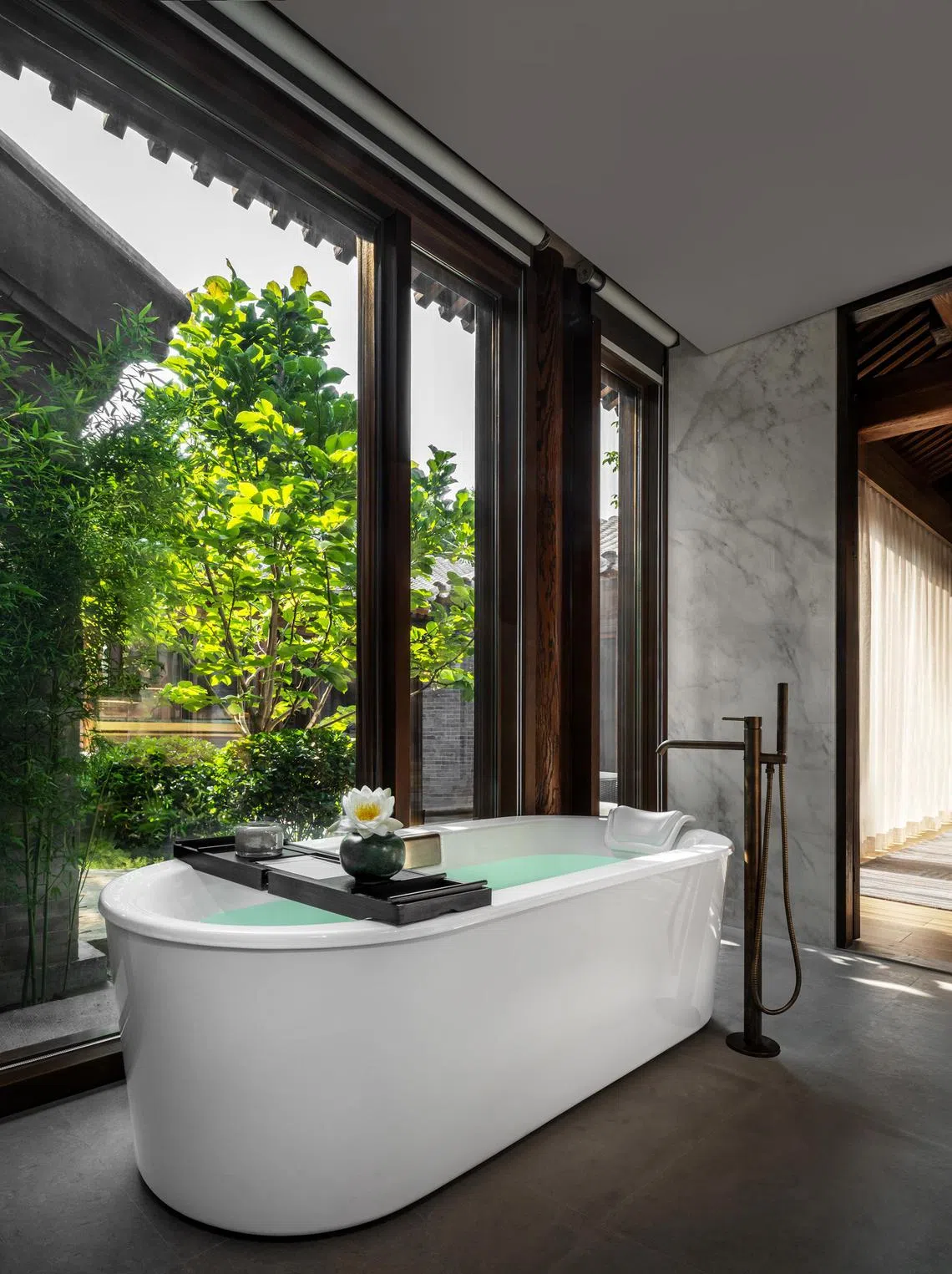
The courtyard houses have been modernised with bathrooms and full-height glass windows.
PHOTO: MANDARIN ORIENTAL QIANMEN
Additionally, the inner walls of the courtyard houses were converted to floor-to-ceiling windows to let in natural light, creating a brighter and more open atmosphere.
They also offer uninterrupted views of the tranquil courtyards, enabling guests to be fully immersed in the beauty of the changing seasons – from the blossoms of spring to the poetic snow-covered landscapes of winter – even from one’s bed.
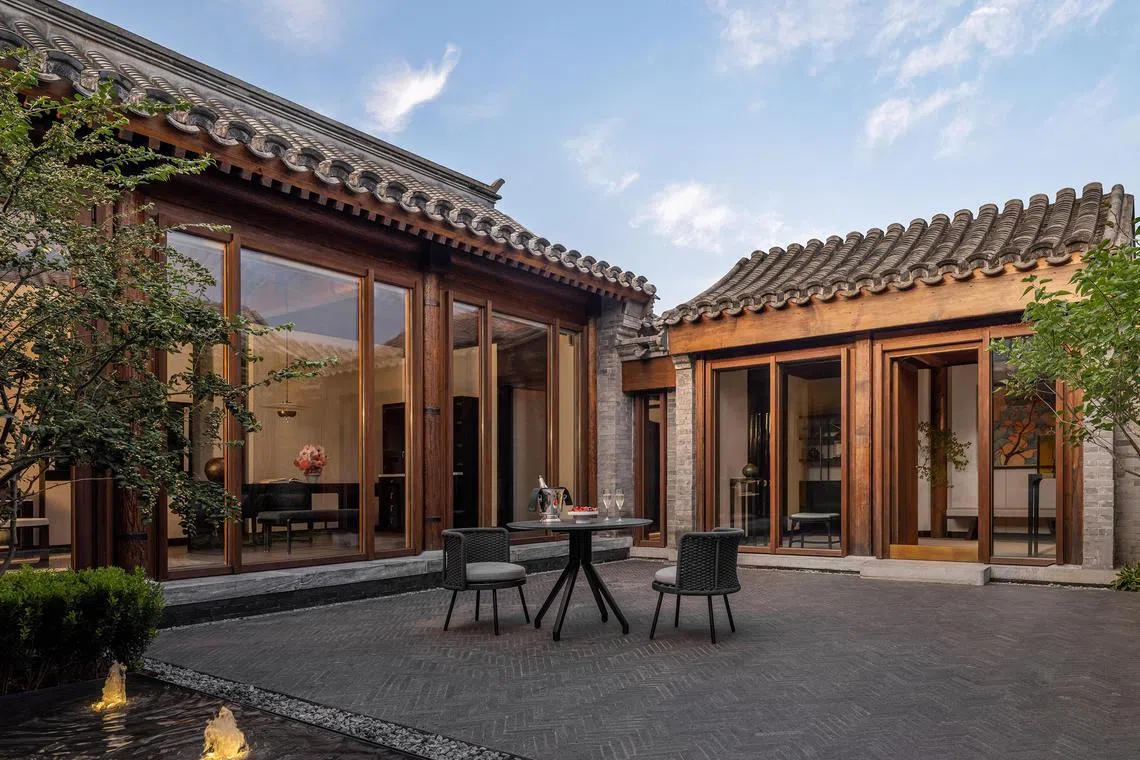
Full-height glass walls let in natural light while offering unblocked views of the peaceful courtyards.
PHOTO: MANDARIN ORIENTAL QIANMEN
It is this thoughtful integration of modern comforts with traditional design that makes staying at the Mandarin Oriental Qianmen an immersive experience.
While the hotel offers a speedy buggy service to whisk guests around the place in a jiffy, I find it much more rewarding to wander through the hutong to reach various parts of the hotel – such as the lobby, spa, and food and beverage outlets like Cantonese restaurant Yan Garden and cocktail bar Tiao.
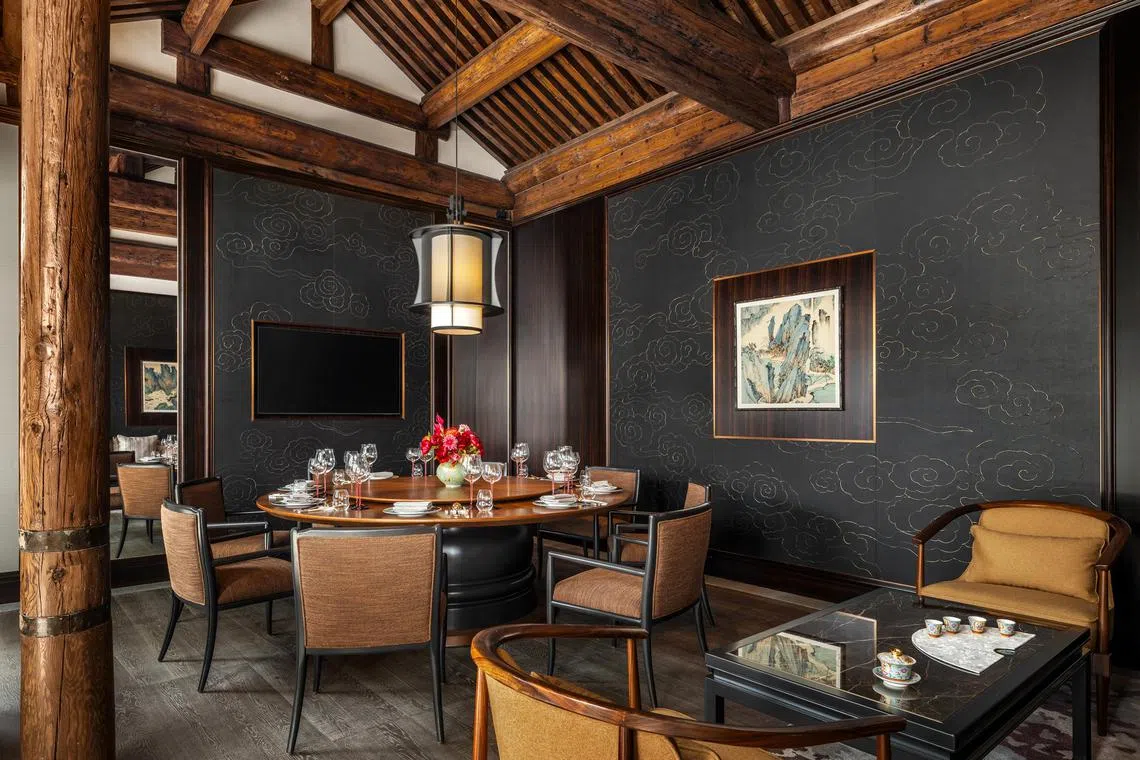
Dark walls and brushed metal accents complement the original woodwork of restaurant Yan Garden’s private dining room.
PHOTO: MANDARIN ORIENTAL QIANMEN
According to a local friend, in the past, busy parents would place their babies in cribs in the alleyways and the neighbours would watch over the kids while the parents were at work.
Unsurprisingly, nobody does this anymore. But during my daily sojourns, I still had opportunities to experience the convivial, neighbourly atmosphere of the locale.
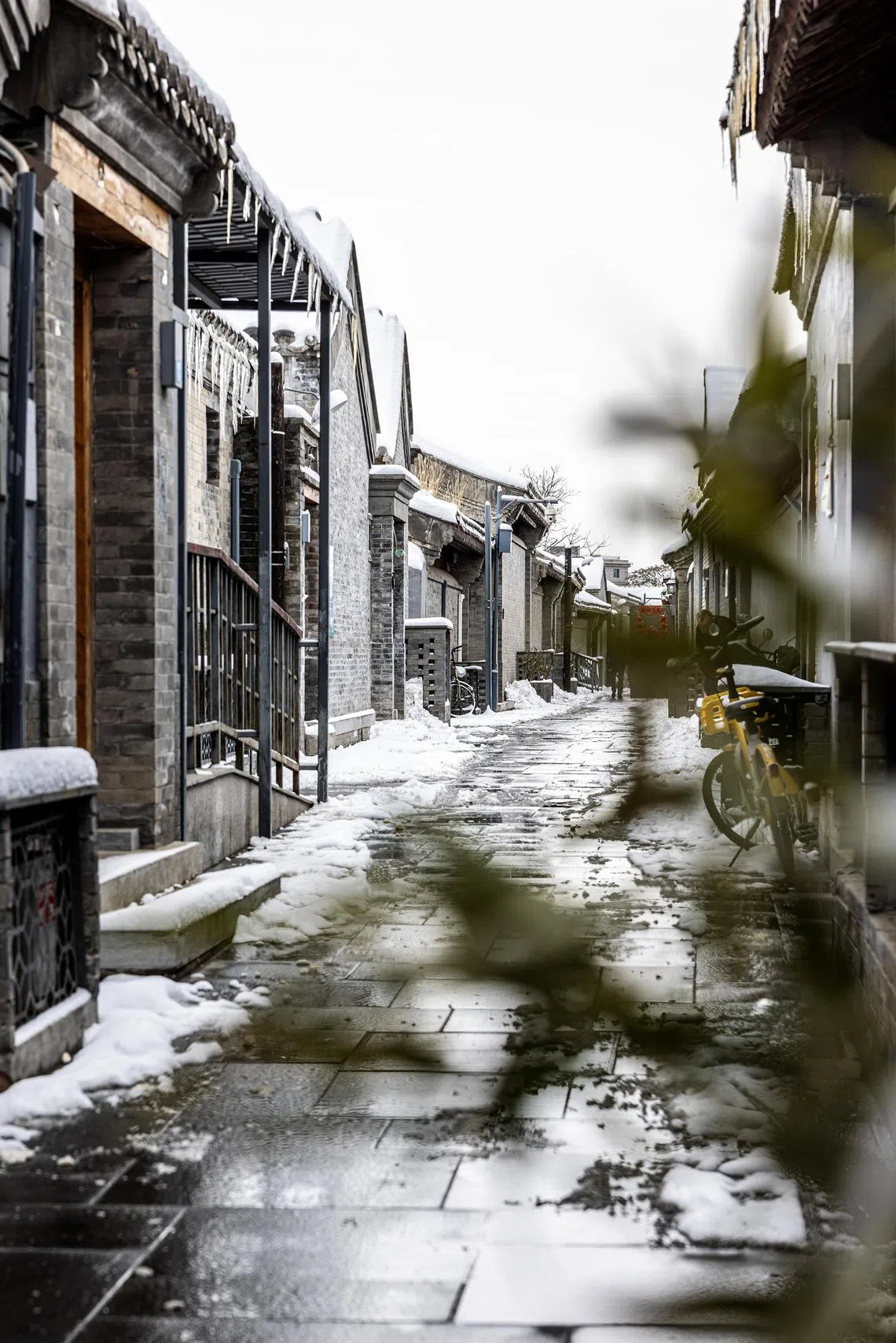
A hutong alley in the winter.
PHOTO: MANDARIN ORIENTAL QIANMEN
I exchanged smiles and greetings with friendly neighbours going about their daily chores like grocery shopping. I sneaked curious glances at an elderly gentleman known to walk his pet cricket in a wooden container, savoured the delicious aroma of freshly cooked jianbing (Chinese crepes) at the local snack shop and bought coffee at the neighbourhood cafe.
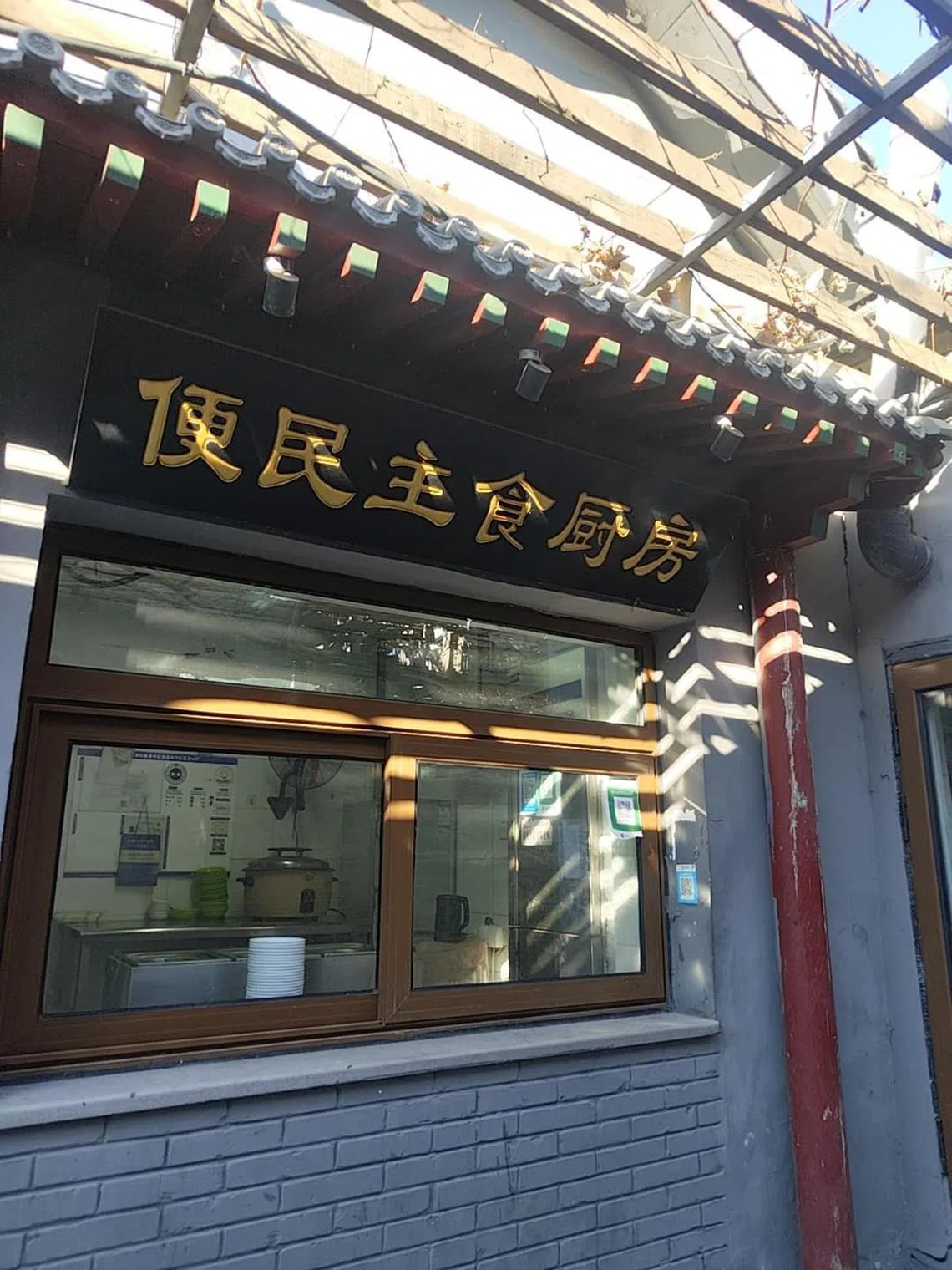
A local snack shop in the hutong.
PHOTO: MANDARIN ORIENTAL QIANMEN
My most memorable experience was during a private calligraphy session with a master in the study of a courtyard house. It is one of several in-house activities offered by the hotel, including kitemaking and taiji.
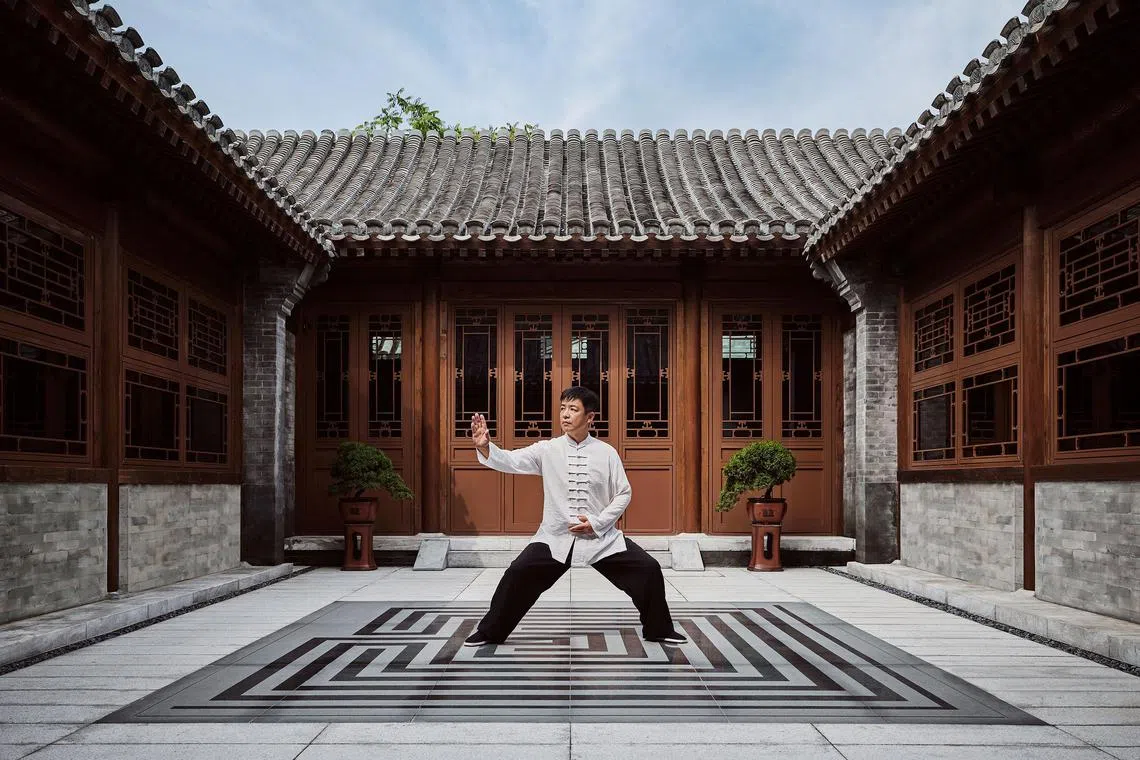
Taiji is one of several cultural activities offered at the hotel.
PHOTO: MANDARIN ORIENTAL QIANMEN
As we practised painting the different strokes of Chinese characters, he talked about the philosophy of calligraphy and its importance in Chinese history.
Maybe it was the inspiring atmosphere of being in a historic house, or his artistic approach. But in that moment, I felt something that years of Chinese lessons in school had failed to instil in me – a deep connection to my ancestral culture.
Global Design is a series that explores design ideas and experiences beyond Singapore.
Karen Tee writes on lifestyle issues from Singapore.

